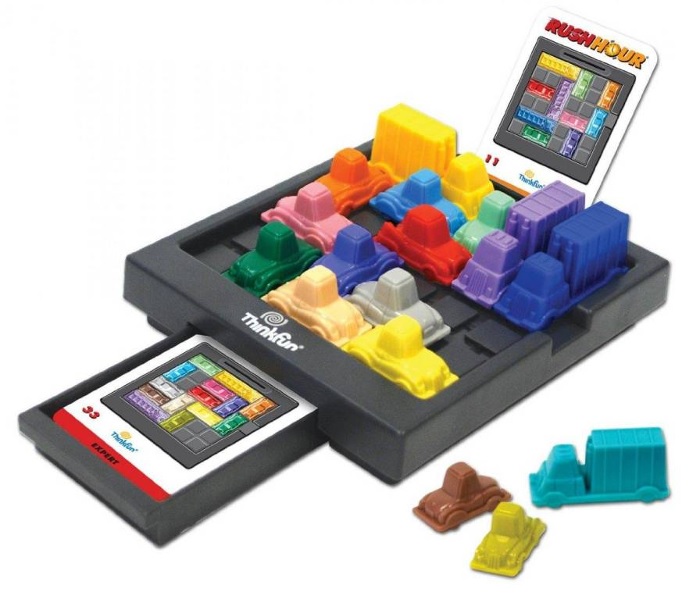This first page describes the Anemone workbench. It aims at introducing the way Anemone-doc works to create documentation.
The objective of this workbench is threefold:
To make it more practical, the authors uses the workbench Anemone on a running example, the rush hour puzzle.

Rush Hour Problem : the game as illustrated at Michael Fogleman
This game, illustrated in the following figure, consists in moving cars and trucks on a 6×6 grid, according to their direction, such that the red car can exit. It can be formulated as a coordination problem by considering cars and trucks as autonomous agents which have to coordinate on the basis of free places
The implementation
The Anemone workbench has been impletement on top of Scala [1], which combines the object-oriented and functional paradigms and which benefits from strong static type systems, together with the Processing library [2] which allows for creating animations by redrawing canvas several times per second (typically 60 times per second).
The key ideas for implementation
Information
Footnotes
| [1] |
|
| [2] |
|